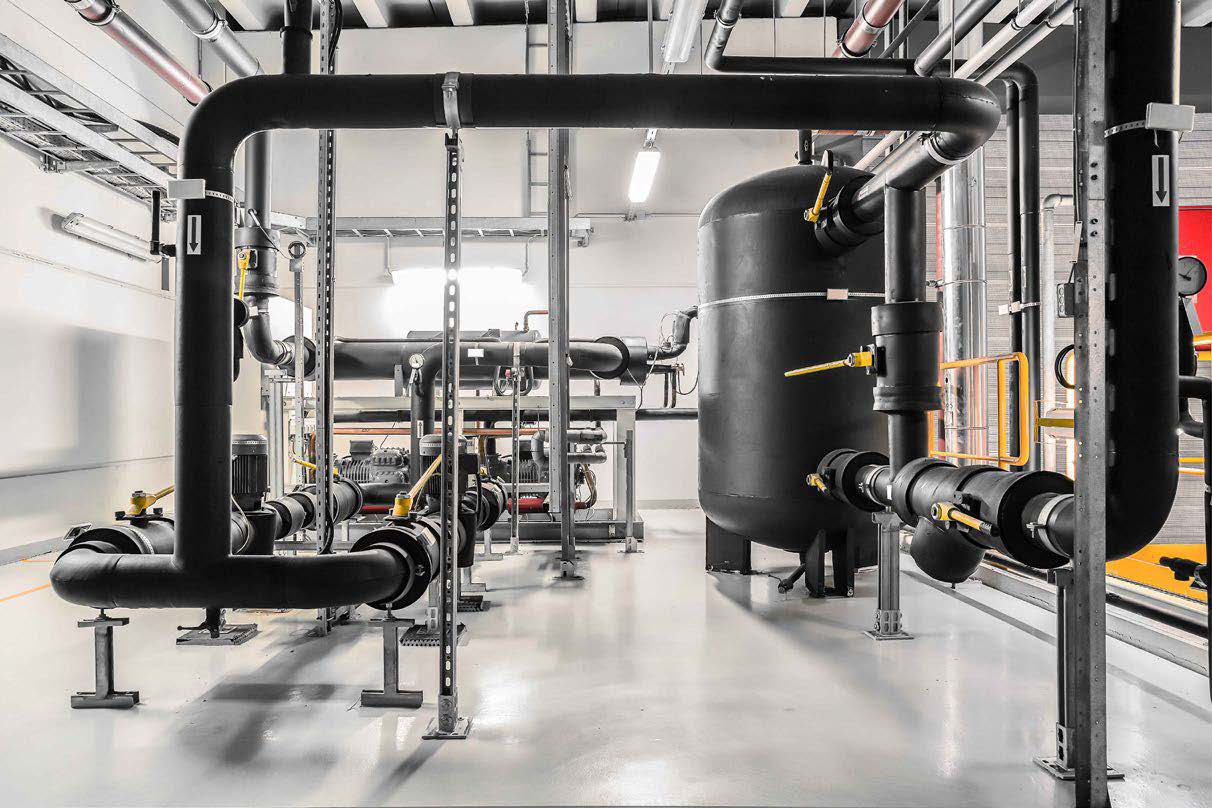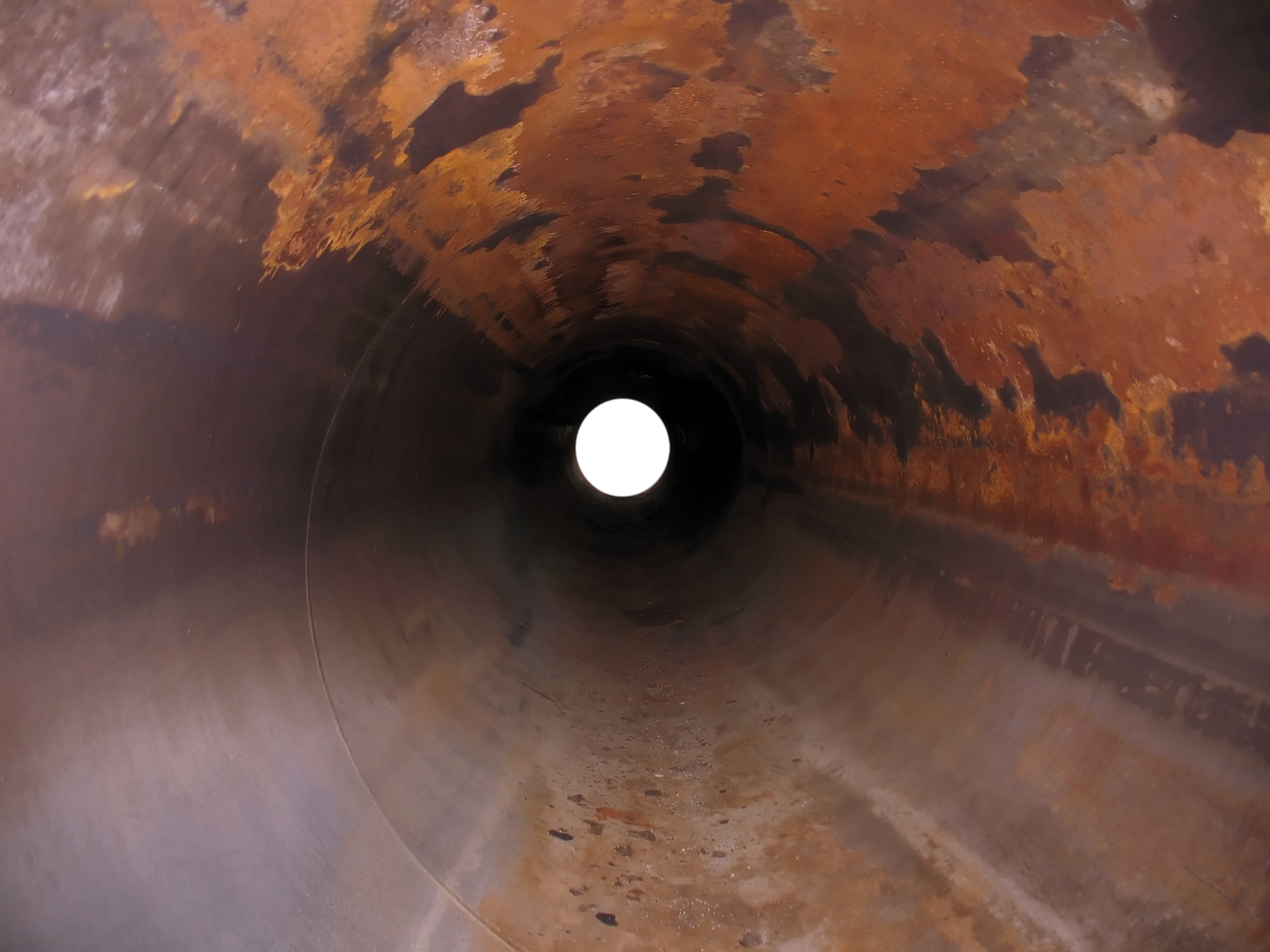Introduction
Corrosion in liquid cooling loops is caused by chemical, electro-chemical, or abrasive action by the heat transfer fluid on the wetted surfaces. Chemical product layers formed by corrosion can inhibit suitable heat transfer between the liquid and wetted metal surfaces. The corrosive products can introduce debris into the fluid system affecting fluid flow, clogging up filters and tight restrictions, or even damaging pump components. In extreme conditions, leaks can form if enough material is removed from the fluid containment. For applications requiring high purity of the process cooling fluid, corrosion creates contamination of fluids whose purity requirements may be in parts per billion level. In most applications, metal corrosion can be managed, slowed, or even stopped by using the appropriate materials and prevention techniques.
Materials
Stainless steel, and in particular 300 series (austenitic) stainless steel, is inert against nearly all heat transfer fluids due to the nature of the chromium (III) oxide passivation layer covering the surfaces of such steels. When using deionized water, stainless steel and nickel are considered to be appropriate for wetted surfaces. Although stainless steel is excellent for use against corrosion in most cases, it comes with a significant disadvantage. Stainless steel has a rather low thermal conductivity, especially when compared to other metals such as aluminum or copper. However, high chloride concentrations can overcome stainless steel’s resistance.
Aluminum tends to be susceptible to corrosion, or pitting, from impurities in unpurified water. Even with a glycol solution in distilled water, both ethylene glycol and propylene glycol form acidic compounds under oxidation. This becomes corrosive on wetted surfaces and forms organic acid byproducts. To prevent this, corrosion inhibitors are customarily added to the glycol, in which case, its performance as a corrosion retardant is greatly improved above plain water. Anodization of wetted aluminum surfaces is the formation of a passivated layer of aluminum (III) oxide (Al2O3). This forms a layer thicker, by orders of magnitude, than the thin natural passivated layer that forms on exposed aluminum. The natural layer is not an effective barrier against corrosion, but an anodized layer can be, provided moderate pH levels are maintained and halide ion concentration remains low. Other metals can be protected using coatings such as paint or electroplating. Anti-corrosive paints and coatings are commonly used to protect metals from degradation due to moisture, humidity, salt spray, oxidation or exposure to a variety of environmental conditions or industrial chemicals. These corrosion resistant paints and coatings offer additional protection for metal surfaces. Metallic coatings, or plating, can also be applied to inhibit corrosion.
Copper and copper nickel alloys have good resistance against corrosion and a natural resistance to biological growth. As with aluminum, however, corrosion inhibitors should be employed to avoid acidic corrosion.
Pit Corrosion
Pitting is also of particular concern in cooling loops. In a low velocity area, a pit can form due to the localized high concentration of a corrosion agent, such as halide ions. Once formed, the rate of corrosion in the pit accelerates due to the volume within the pit not exchanging fluid with the rest of the fluid volume, resulting in ever increasing concentrations of corrosive ions and the expansion of the pit.
Damage from this type of corrosion is particularly dangerous as it occurs with little observable effect on appearance or performance, with the corrosion affecting only a small portion of a surface. The corrosion, however, propagates deeply into the metal and can create leaks with no warnings.
As with other corrosion forms, high halide concentration, especially in the presence of oxygen and higher or lower pH levels, will create ideal conditions for pitting to occur in aluminum or steel. Stagnant flow locations should be avoided, and corrosion inhibitors for removal of oxygen can be added.
Galvanic Corrosion
Galvanic corrosion is the result of the difference in the electrode potential of two different materials in contact through an electrically conductive path and a sufficiently conducting electrolyte. Specifically, it is the natural result of materials chemically changing to their most stable state in a system with other components able to transport or absorb electrons and ions. The electrically conductive path will typically occur through metallic plumbing and hardware making up the cooling system. The less noble of the two metals will corrode over time, dissolving into the water. Aluminum and copper, two commonly used heat transfer metals, are examples of dissimilar metals that tend to lead to galvanic corrosion problems in heat transfer. Steel and copper alloy combinations can be problematic if copper is allowed to dissolve into the fluid and plate onto steel surfaces, resulting in aggressive galvanic action on the steel.
Selection of wetted materials that are electrochemically similar will reduce the potential between them and slow the rate of galvanic action. Consultation of the galvanic series will show the ranking of metals and their reactivity in a fluid, typically available for seawater and fresh water. The larger the difference between the two metals in question, the greater the corrosion rate on the less noble anodic metal
Erosion
Erosion is due to abrasion from solid matter debris and high fluid velocities. Proper filtration, or better yet, the use of practices described above, will reduce the amount of debris to be dealt with. The problem of high fluid velocities requires more analysis. A localized corrosion location tends to be protected from further corrosion in a stagnant volume by the passivated corrosion products, but increasing fluid velocity will push the products away and uncover unreacted and susceptible metal underneath.
Prevention Techniques
Corrosion inhibitors specific to the metal to be protected can be added to cooling fluids, though these can require additional maintenance to recharge the inhibitor as it will be depleted over time. Different fluid types, such as clean distilled water, may reduce the rate of corrosion. A dielectric heat transfer fluid can be used to eliminate the ionic path from the corrosive metal if the process and performance requirements were to allow its use.
Cathodic protection is a method employed to guard against galvanic corrosion. Cathodic protection uses a more sacrificial reactive metal to act as a preferential anode. It works by converting the sacrificial anodic (active) areas on a metal's surface to cathodic (passive) areas through the application of an opposing current. Proper placement of the sacrificial anode with respect to the anodes and cathodes is a complex matter. Dielectric unions may be employed to break the conductive path between dissimilar metals. Special care must be taken regarding the hardware and plumbing components, ensuring that they are not a source of dissimilar metal for corrosion.
For erosion prevention, flow restrictions and direction changes create the opportunity for localized high velocity regions, even when the overall volumetric flow rate through the system seems to correspond to a manageable fluid velocity. Sudden changes in tube or pipe diameter should be avoided, especially from higher diameters to lower ones. Directional changes should allow for the maximum possible turning radius, with elimination of sharp projections or recesses in the flow path. Of course, higher fluid velocity is typically a desired design feature in a cooling system, with improved heat transfer performance between the fluid and heat transfer surfaces. This requires a balance to be established between heat transfer performance and long-term resistance to the effects of erosion corrosion. Velocities beyond 1-2 m/s in any location should be avoided. In addition, acceptable fluid velocities decrease depending on the susceptibility of the wetted surface in question and the temperature and aggressiveness of the heat transfer fluid, with higher temperatures obviously increasing the rate of chemical attack on the wetted surface.
Conclusion
No metal is impervious to corrosion in every environment. However, through understanding the key conditions that cause corrosion, steadfast monitoring and upkeep, corrosion can be contained and even controlled. Monitoring surface conditions and implementing appropriate prevention methods are vital to protecting cooling loops against metal deterioration and corrosion.


